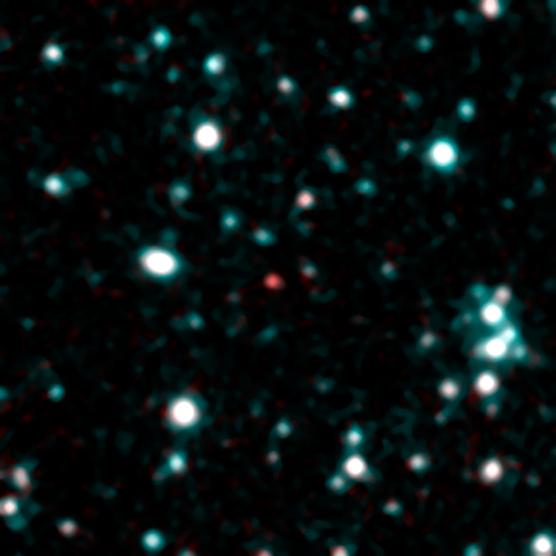NASA JPL | 2010-210 | 24 June 2010
Astronomers have uncovered what appear to be 14 of the coldest stars known in our universe. These failed stars, called brown dwarfs, are so cold and faint that they'd be impossible to see with current visible-light telescopes. Spitzer's infrared vision was able to pick out their feeble glow, much as a firefighter uses infrared goggles to find hot spots buried underneath a dark forest floor.
The brown dwarfs join only a handful of similar objects previously discovered. The new objects are between the temperatures of about 450 Kelvin to 600 Kelvin (350 to 620 degrees Fahrenheit). As far as stars go, this is bitter cold -- as cold, in some cases, as planets around other stars.
These cool orbs have remained elusive for years, but will soon start coming out of the dark in droves. NASA's Wide-field Infrared Survey Explorer (WISE) mission, which is up scanning the entire sky now in infrared wavelengths, is expected to find hundreds of objects of a similarly chilly disposition, if not even colder. WISE is searching a volume of space 40 times larger than that sampled in the recent Spitzer study, which concentrated on a region in the constellation Boötes. The Spitzer mission is designed to look at targeted patches of sky in detail, while WISE is combing the whole sky.
...
The 14 objects found by Spitzer are hundreds of light-years away -- too far away and faint for ground-based telescopes to see and confirm with a method called spectroscopy. But their presence implies that there are a hundred or more within only 25 light-years of our sun. Because WISE is looking everywhere, it will find these missing orbs, which will be close enough to confirm with spectroscopy. It's possible that WISE will even find more brown dwarfs within 25-light years of the sun than the number of stars known to exist in this space.
